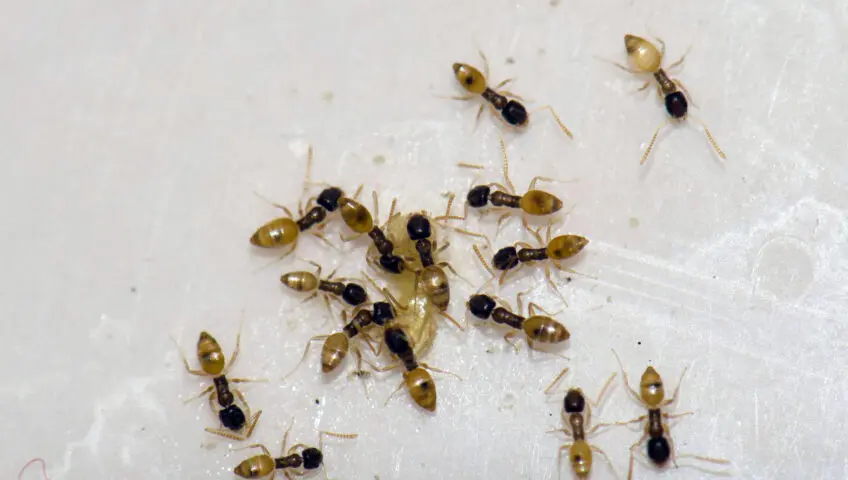The tapestry of nature contains many fascinating creatures, each contributing to the delicate balance of ecosystems. Among these, the ghost ant (Tapinoma melanocephalum) stands out as a tiny, elusive enigma. Despite its diminutive size, this ant species has captured the curiosity of entomologists and homeowners alike.
The ghost ant, also known as the black-headed ant or sugar ant, is a species native to tropical and subtropical regions. Their name is derived from their almost translucent appearance, making them appear like apparitions as they move about. Measuring just 1.3 to 1.5 millimeters in length, these ants are so small that they often go unnoticed until they establish colonies within our homes. They are known for their preference for sweet foods, and their colonies are often found near food sources. Ghost ants are notorious for their ability to establish nests in challenging locations, such as wall voids, potted plants and electrical outlets.
Like other ant species, ghost ants go through a complete metamorphosis, consisting of egg, larva, pupa, and adult stages. Colonies typically contain multiple queens, and workers can quickly establish new nests when conditions are favorable. The reproductive capabilities of ghost ants contribute to their resilience and ability to form satellite colonies, making control measures more challenging.
While ghost ants are not known to cause structural damage to homes, they can be a nuisance when they invade indoor spaces. Their attraction to sugary substances and ability to establish colonies in hidden areas make them difficult to control. Homeowners may find these ants in kitchens, bathrooms, and even bedrooms, seeking out food and moisture.
Managing ghost ant infestations requires a combination of sanitation, exclusion, and, in some cases, professional pest control services. Key measures include:
- Sealing entry points: Identifying and sealing potential entry points, such as cracks and gaps in walls, windows and doors, can help prevent ghost ants from infiltrating your home.
- Eliminating food sources: Practicing good sanitation by cleaning up spills, storing food in airtight containers and promptly disposing of garbage can reduce the attractiveness of your home to ghost ants.
- Moisture control: Addressing and fixing any plumbing leaks or areas of excess moisture can deter ghost ants, as they are attracted to water sources.
- Professional pest control: In cases of severe infestations, consulting with a pest control professional may be necessary to implement targeted and effective treatment.
Understanding your adversary and taking preventive measures can spare you the headache and frustration of grappling with an infestation. For those seeking a helping hand, Slug-A-Bug is your go-to for all your pest control requirements. Contact us today for a complimentary, obligation-free consultation at (321) 259-7844.
For more information:
Ghost Ant – UF/IFAS Extension Wakulla County (ufl.edu)
Entomology | Definition & Facts | Britannica
Tropical and subtropical desert climate | Characteristics & Effects | Britannica
Metamorphosis | Insect Development, Adaptation & Evolution | Britannica
Pest Control – Slug-A-Bug Pest Control (slugabug.com)
